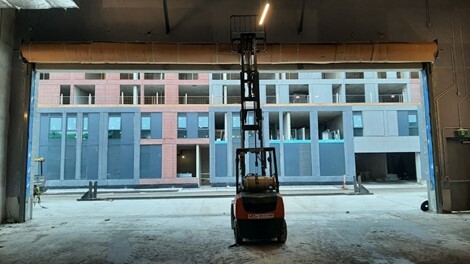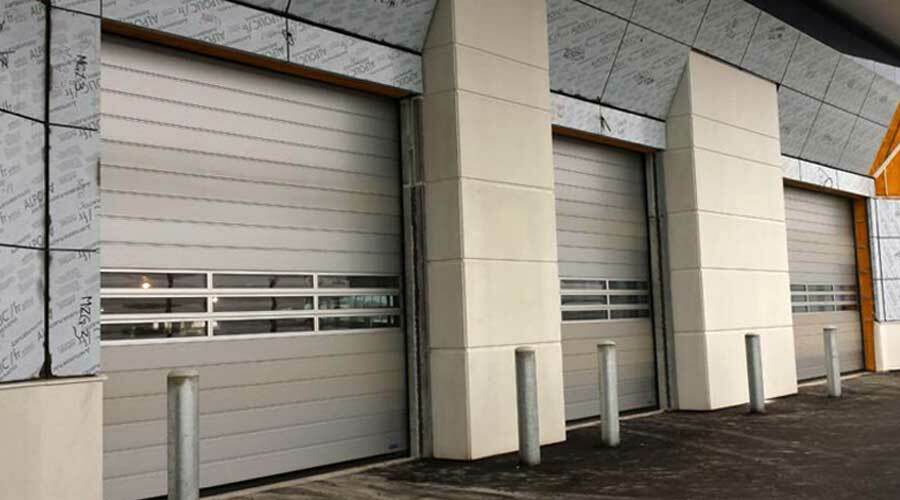Working around heavy equipment like sectional doors, industrial loading docks or rolling steel doors can pose many risks like serious injuries or even death. Every business dreads having some sort of third party service team having an accident on their property that could have been avoided if proper safety precautions were in place. In Ontario alone, there have many heavy equipment related incidents that resulted in property damage or injury to a technician. Even the most seasoned technicians should always have the mindset that each worksite has its own set of hazards, and think of what they can do to keep themselves injury free.
In an effort to have a incident free installation when on a worksite, we offer these tips to help keep your service team safe.
In-house Technician Safety Training: Very few companies offer internal training and provide tips on different scenarios you might encounter on the work site. There are some mandated online training courses like the which employees working in these environments need to take, but holding safety training at least once a month allows technicians the opportunity to address potentials hazards on a worksite
Avoid Blind Spots: Some of the most simplest accidents are caused by not looking where you’re going or having your view obstructed by another object. This goes for looking out for other workers in the area that might not know you’re working in the same space. Some of the ways to make it safe around blind spots is to physically get off the machine you’re operating(if working alone), work with another person who can be your second pair of eyes and secure the area with the appropriate signage and personal protective equipment.
Install equipment following the manufacturer’s operating manual: Depending on the type of heavy equipment this could be life or death – especially if it involves electrical wiring. Following the manufacturers safe installation guidelines keeps you and others safe on the worksite
Clear communication with the people around you: Two-way radios or spotters are both ideal to have a on worksite. Especially one that is going to be noisy and occupied by other contractors – which is usually the case in new construction environments.
Always wear high-visibility clothing and steel-toed boots: Being seen is and if you’re visible enough you’re less likely to be injured on the site.
Load and Unload Safely: This goes back to reading the manufacturer’s recommended guidelines and making sure you’re not potentially endangering yourself or others around you. If you’re loading or unloading a lengthy piece of equipment you can reduce the chances of the machine rolling by making sure you’re on level ground and balanced. Also, the machine itself has the potential to fail at anytime so using good judgement can save you a costly incident.
Do a Pre-work Check for Site hazards: Before starting work, complete a visual check for both overhead and underground issues dangers, such as cables, gas lines, and hydro wires.
Make sure you’re physically and mentally capable of the work ahead: When installing heavy-equipment, for your safety you want to be at the top of your game mentally and physically. You don’t want to put yourself in a situation where you are lacking of sleep or your still hung over and there is an accident on site. If you need a day to recover – take it or ask a more experienced operator to complete a specific part of the job. You don’t know it yet, but you probably saved someone’s life today.
Got any safety tips or advice of your own you’d like to share? Feel free to contact Wilcox Doors




